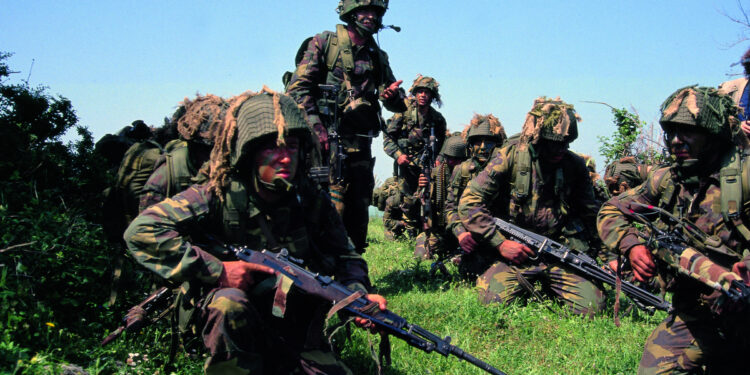American readers may be surprised to know that Italy’s locally developed Beretta BM59 shared a moniker with the Cold War’s most popular service rifle, and that its roots hit a lot close to home.
By Pierangelo Tendas
Unlike former fellow Axis powers Germany and Japan, Italy was never forced to disarm and disband its forces in the aftermath of World War II. The events of the late stages of the war and the location at the center of the Mediterranean Sea made the country, now a republic, a key ally in a new world whose climate was rapidly turning chilly as the Cold War mounted.

The post-WWII Italian military was largely equipped with U.S. handovers, specifically M1 Garand .30-06 caliber rifles, for which Winchester also donated manufacturing machinery to Beretta and Breda. When NATO adopted the new 7.62×51mm as its standard unified service rifle caliber in 1954, the Italian Army arsenal in Terni took up the job of converting existing Garand rifles to the new cartridge, while Beretta and Breda started the manufacture of 7.62mm caliber M1s for foreign sales, most notably for Denmark.
The lessons learned of WWII, however, ushered in a new era where bolt-action, semi-automatic rifles, and light automatic rifles would be replaced – at least tentatively – by select-fire individual weapons that would cover most if not all roles in modern infantry. If the Belgian FN FAL and the Spanish CETME – improved to become the Heckler & Koch G3 – would become by far the most successful in the category of individual weapons we today know as “battle rifles”, the U.S. would spend years and millions of dollars in an attempt to develop a totally new, totally domestic new service rifle that would still retain as many features of the beloved M1 Garand as possible; the result, the M14, is still controversial among historians and gun enthusiasts alike, and its tenure before replacement was very short if compared to its international counterparts.
Cash-strapped post-war Italy had to standardize doing what it could with what it had. A team of Beretta engineers headed by Domenico Salza and Vittorio Valle – both of whom had learned their trade from Tullio Marengoni, Beretta’s head engineer before and during WWII and the inventor of the MAB series of sub-machine guns – was tasked to create a new service rifle for the Italian military that could be produced with existing technologies.
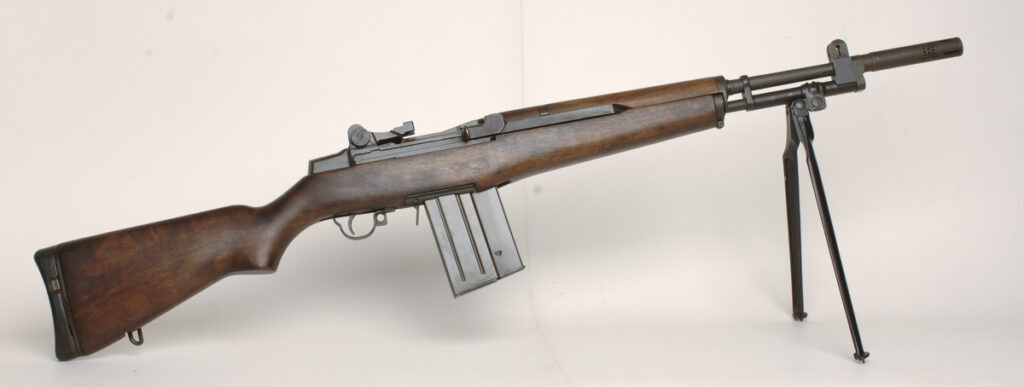
The solution was simple: at first, existing M1 Garand rifles were modified to feed through detachable 20-round, double-stack, single-feed box magazines; the solution, known as the “Garand Type E”, would later be further modified into a select-fire rifle with a shorter handguard and a peculiar muzzle device. The Beretta Modello 1959, or BM59 for short, was born. It’s deployment in the Italian military started in 1962.
IF IT WORKS, DON’T CHANGE IT
The BM59 was designed to be built around an essentially unmodified Garand action and a slightly modified Garand gas system and sear. Taking cues from another firearm that the Italian government had received in droves by the U.S. after WWII – the M1 carbine, and more specifically its select-fire counterpart, the M2 – the Beretta engineering team installed a fire selector on the left side of the receiver which, when switched from “S” (“Semiautomatico”) to “A” (“Automatico”), would activate a U.S. M2 Carbine style disconnector lever assembly, allowing the BM59 to fire in full-automatic, at a cyclic rate of approximately 750 rounds per minute.
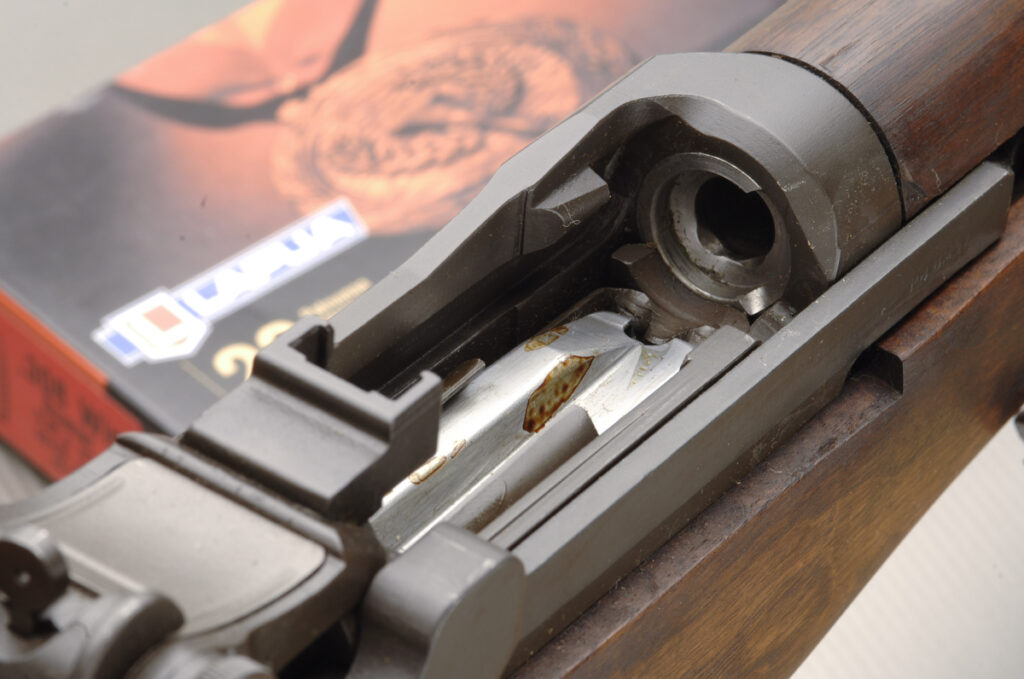
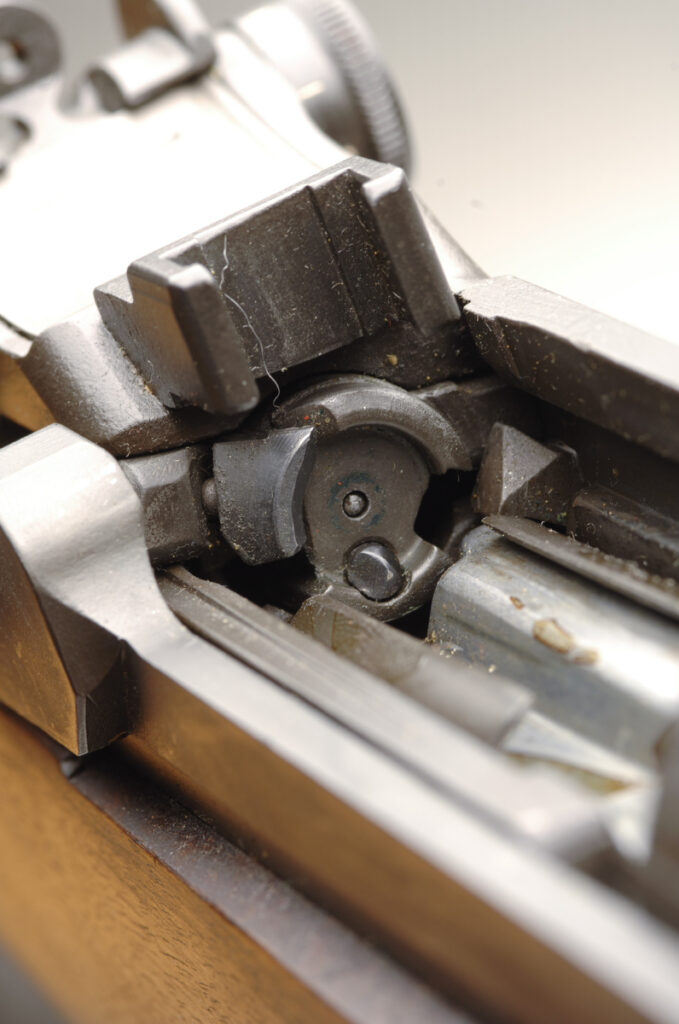
As anybody who has ever shoulder-fired 7.62×51mm NATO battle rifle in full-automatic, recoil was harsh… to say the least. In order to mitigate such a punishing factor, Beretta would issue every BM59 with a folding metal bipod, which allowed more accurate semi-automatic fire and provided a stable platform for full-automatic, sustained covering fire; note that back in the day, the standard support weapon for the Italian Armed Forces was the locally-built 7.62×51mm Beretta Mg.42/59 universal machine-gun, which required at least two men to carry and operate at squad level.

Additionally, all BM59 rifles would be equipped from the factory with a muzzle device called “Tri-Compensatore” (“tri-compensator”), which dubbed as a flash hider, muzzle brake, and rifle grenade launcher. Much like many other NATO armies at that time, the Italian military made extensive use of rifle grenades, particularly the 75mm Energa manufactured in Belgium by MECAR and known in the U.S. service as the M28 rifle grenade; the BM59 would, thus, also come equipped with a flip-up grenade leaf sight (“Alidada” in Italian) which, when raised, would also act as a cut-off valve, preventing any gas from reaching the piston.

The grenade sight was pre-set for target at 50, 75, and 100 meters, and marked specifically “Energa” at the bottom. The grenade sight and bipod were all in one assembly with the gas valve and front sight tower; when the Energa grenade was phased out in favor of the improved-capability Super Energa, the leaf sights were replaced with new ones, which were pre-sighted to 75-, 100-, and 120-meter increments.
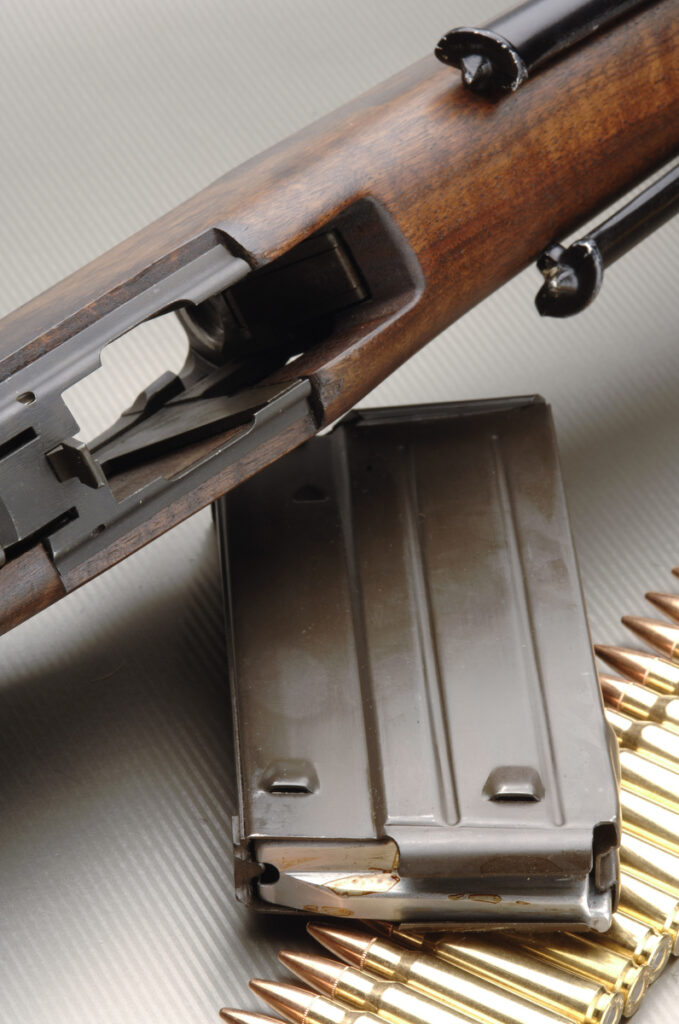

Being based on the Garand action, the BM59 featured a charging handle on the right side of the receiver, a hold-open button to the left, and the same type of front and adjustable rear sight used on the U.S. M1 rifle. The front-in, rock-back magazine was held in place by a paddle catch to the rear of the magwell; the safety was located in front of the trigger guard, and consisted of a flat plate that could be pushed in and out with the shooter’s index finger. The safety plate was perforated, so that BM59 rifles could be secured with a chain or a metal rod when held on a rack – once again just like the Garand.


Additionally, the BM59 also featured a winter trigger in form of an up-folding lever that would normally lay flat against the bottom of the action, to the right of the trigger guard. When necessary, it could be folded down to allow the BM59 to be fired with mittens or heavy gloves.
THREE SUITS FOR THE SAME RIFLE
The Beretta BM59 rifle would be manufactured in three main variants, the most commonly available being the BM59 ITAL, known by the Italian military simply as the FAL, standing for “Fucile automatico leggero” (“Light automatic rifle”). The BM59 ITAL was the baseline model with a standard fixed stock, which hosted a cleaning and maintenance tool behind a trapdoor in the buttplate. An export version, known as the BM59 Mk.1, came without the distinctive “tri-compensator” device on the muzzle.

The second variant – less common in Italian arsenals, but by far the most popular among troops due to its lower weight and easier maneuverability – was the ITAL-TA, with TA standing for “Truppe Alpine” (“Alpine troops”), initially conceived for the Italian Army’s mountain regiments. The ITAL-TA variant came from factory with a vertical brown plastic pistol grip and a side-folding two-strut metal stock; a variant of the ITAL-TA, known in Italy as the ITAL-Para (from “Paracadutisti”) and marketed internationally as the Mk.3, came with a removable tri-compensator device, turning it into an even more compact package to be secured to a paratrooper’s harness before launch.

Finally, two squad automatic weapon variants were proposed, dubbed the Mk.2 and Mk.4 respectively, with the Mk.2 featuring a full wooden stock and the Mk.4 coming with a brown polymer pistol grip. Both were essentially a baseline BM59 ITAL rifle with a fixed stock and vertical pistol grip, not unlike what the U.S. had experimented with in the M14E2/M14A1 – and not unlike it, the Mk.2 and Mk.4 were lackluster in their intended function due to the limitations of the 20-round magazine. The Italian military never adopted the BM59 Mk.2 and Mk.4; export sales were however made to Indonesia and Nigeria, which later proceeded to manufacture them under license respectively as the SP.3 rifle at the Bandung Weapons Factory (now known as PT Pindad), and as the NR-2 rifle at the Kaduna plant (now known as the Defense Industries Corporation of Nigeria, or DICON), which is why this last pattern is known chiefly as the “Nigerian type.”
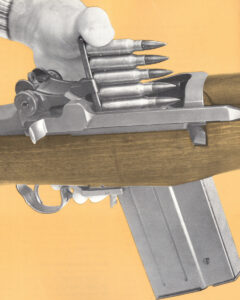
Perhaps not surprisingly, the BM59 was never adapted or modified for sniper or designated marksman purposes. Being based on an unmodified M1 Garand action, the BM59 ejected spent cases from the top, which meant that it could be reloaded by topping off the magazine with 10-round stripper clips (and, indeed, all BM59 rifles came with a dedicated clip guide), but also that it could only be equipped with a side-mounted scope, much like the M1D Garand. By the 1960s, when the BM59 rifle was introduced in Italian service, this was already an outdated solution; while some pictures do exist of Italian Army paratroopers using side-mounted optics on their BM59 rifles, this was by no means a widely adopted solution, but rather a limited-scale concoction by the most elite frontline units of the Italian military to overcome the limitations of their service rifles.
For the same reason, and unlike the M14, no attempt to turn existing BM59s into DMRs was made after the Italian military switched to 5.56×45mm NATO. Other weapon systems had been adopted to fulfill that niche by that point, and now that the AR-70/90 has been phased out in favor of the ARX-160 and ARX-200, the problem can be officially considered as solved.
THE LAST OF ITS KIND
The Beretta BM59 rifle would go on to serve with the Italian military officially until 1990, being retained as a rear-line and reserve rifle for a few more years afterward, as its replacement with the new AR-70/90 5.56mm weapon system was gradual. This makes the BM59 arguably the longest-serving battle rifle having been based on a classic, pre-WWII stock and action design.
As of today, with the Beretta ARX-160 and ARX-200 being universally in service with the Italian military, and with tens of thousands of AR-70/90 rifles in reserve – so many, indeed, that upon their replacement, the Italian government donated many of them to Albania to facilitate the latter’s transition to NATO standards – the BM59 doesn’t fulfill any operational role in its motherland any longer, and like the M1 Garand, M1 Carbine, MAB sub-machine guns, and Carcano rifles, it is confined to ceremonial duties.
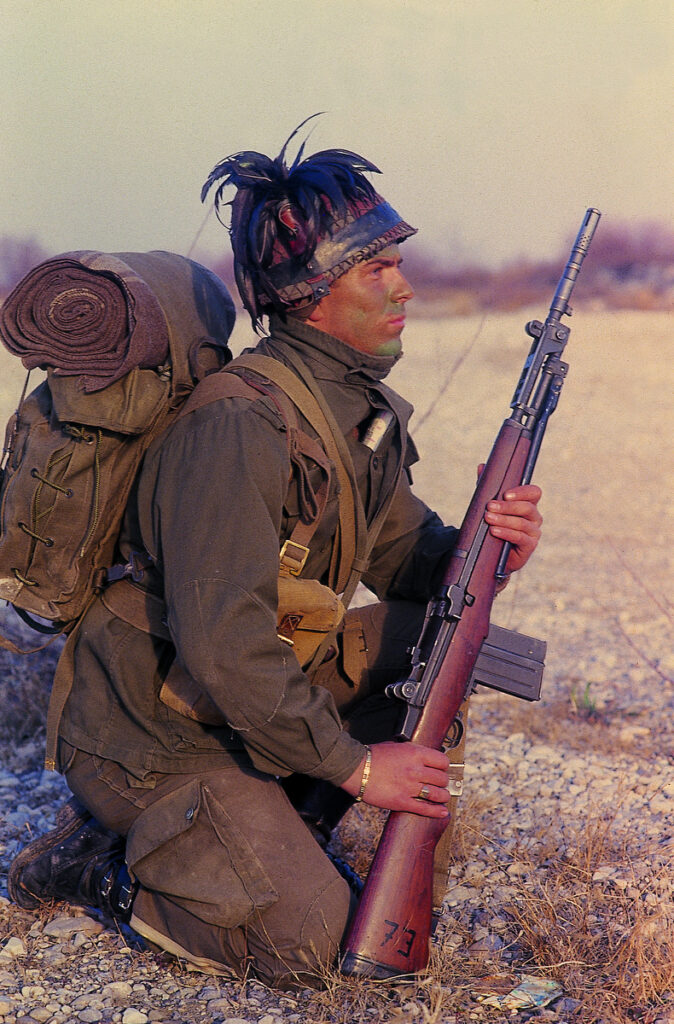
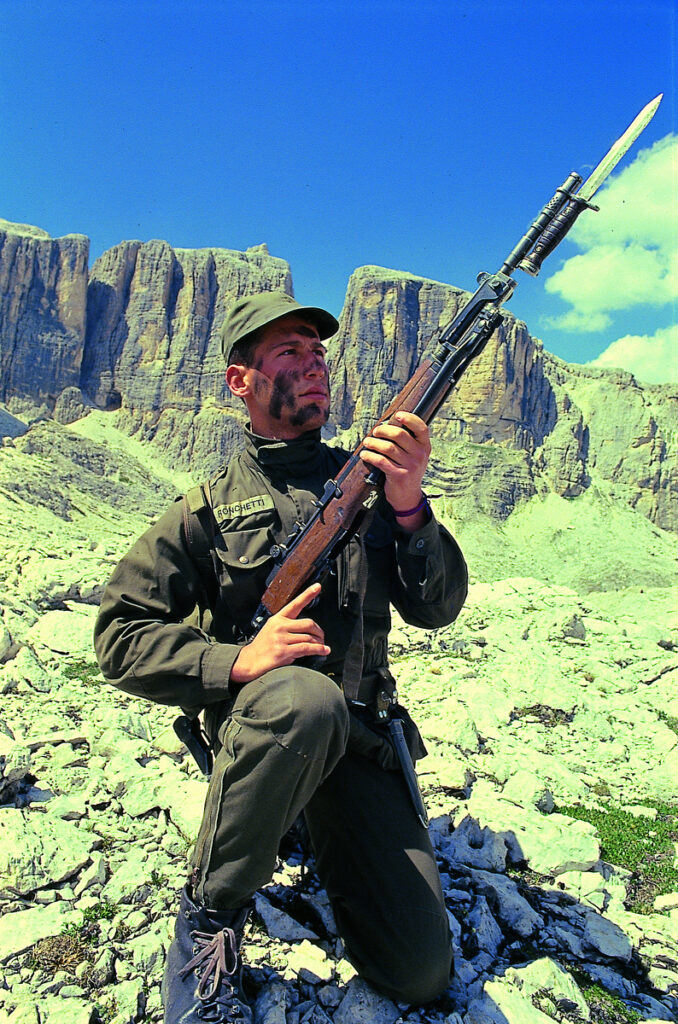
The BM59 also saw distribution on the civilian markets, both in Italy and abroad. In the 1960s, Beretta manufactured very small quantities – approximately 1,700 samples overall – of the BM62 semi-automatic rifle; chambered in 308 Winchester, it came from factory with a five-round magazine and lacked the “tri-compensator” and flip-up grenade sight/gas cutout.
As laws concerning modern sporting rifles relaxed in Italy, and with the country having nothing similar to the “once a machine-gun, always a machine-gun” rule that is in place in the U.S., the Nuova Jäger S.r.l. company would first launch a rifle called the M99 – essentially a Beretta BM62 assembled using old BM59 components – only to flood the Italian civilian market with a huge quantity of proper BM59 rifles from dismissed Italian military stocks, properly refurbished and converted to semi-automatic only. In the following years, other companies, such as Redolfi Armi, did the same. After so many years, the BM59 is no longer an impossible dream for European shooters.
At the same time, Nuova Jäger introduced a line of dedicated accessories for the BM59, including a specific Picatinny scope mount. A similar product is offered by Sadlak Industries in the U.S., providing plenty of clearance for the top-ejecting action while no longer requiring a scope to be side-mounted. Too late to allow the Italian military to convert their BM59s to designated marksman rifles, but welcome news for shooters in Italy and elsewhere that wants to get the best out of their rifle.

As far as American shooters are concerned, BM62 rifles are way more rare and collectable in the U.S. than they are in Europe. BERBEN (the first ever U.S.-based Beretta subsidiary) imported but a few in the 1980s; around the same time, Springfield Armory sold their own BM59-based semi-automatic rifles, assembling them in the U.S. with a mix of locally made and imported parts. Today, for American collectors, the best way to get their hands on a BM59 are the James River Armory build, and parts kits.
| TECHNICAL SPECIFICATIONS | |
| Manufacturer | Fabbrica d’Armi Pietro Beretta S.p.A., Gardone Val Trompia (BS) – Italy |
| Model | BM59 |
| Type | Automatic rifle |
| Caliber | 7.62×51mm NATO |
| Action | Select-fire, gas-operated |
| Safety | Manual, located inside trigger guard |
| Capacity | 20 rounds |
| Rate of fire | 750 rounds per minute (approx.) |
| Sight systems | Fixed front, adjustable rear |
| Barrel length | • 19.32 in. (BM59 ITAL, BM59 ITAL-TA) • 18.41 in. (BM59 ITAL-Para) • 20.85 in. (BM59 Mk.2, BM59 Mk.4) All 4 grooves, RH, 1 turn in 11.96” |
| Total length | • 43.11 in. (BM59 ITAL, • 43.70 in. (BM59 ITAL-TA and ITAL-Para, stock unfolded) • 33.66 in. (BM59 ITAL-TA, stock folded) • 28.54 in. (BM59 ITAL-Para, stock folded, muzzle device removed) • 44.48 in. (BM59 Mk.2, BM59 Mk.4) |
| Weight (empty) | • 9.70 lb. (BM59 ITAL) • 9.80 lb. (BM59 ITAL-TA) • 10.6 lb. (BM59 ITAL-Para) • 12.08 lb. (BM59 Mk.2) |
| Materials | Steel, wood, polymer |
| Finishes | Matte black on all surfaces |



